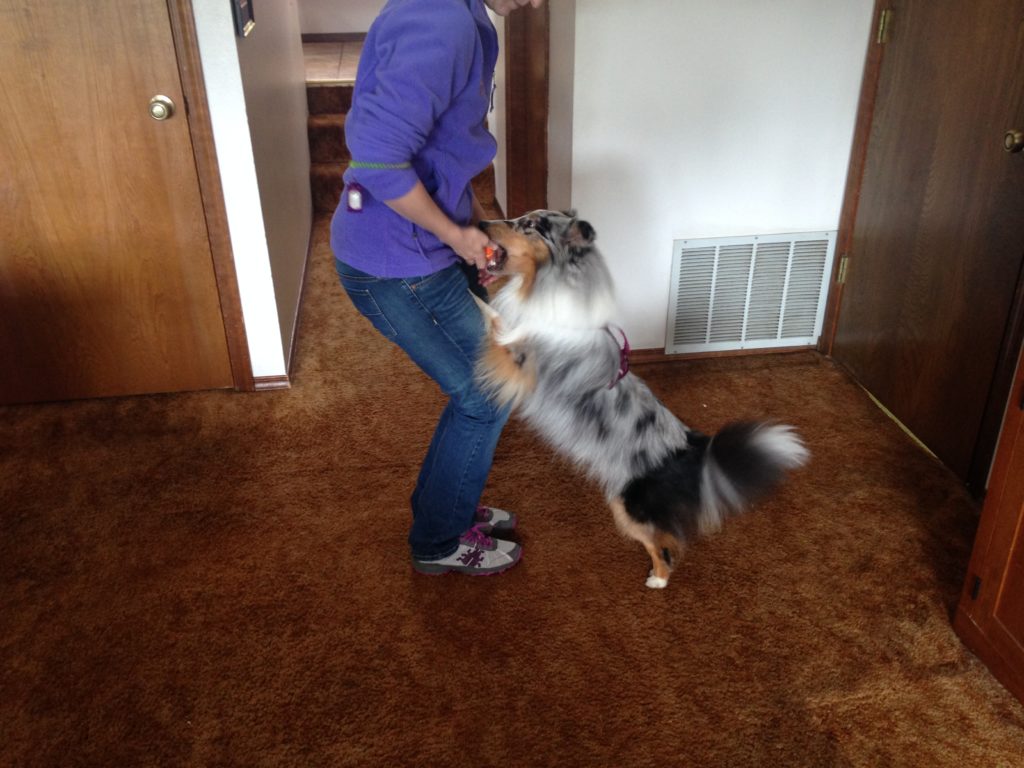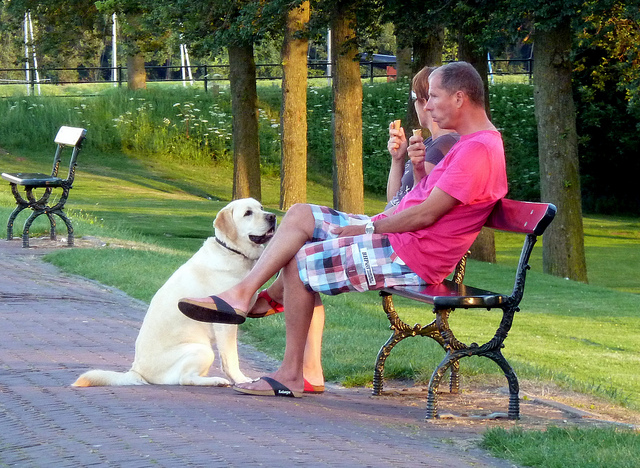Do you have a pushy dog? You know the type – jumps all over you, invades your space while you are trying to eat, barks for attention or toy throwing. They may even knock your kids over by being too friendly. These are not bad dogs. These are dogs that do not understand the concept of manners. It’s a frustrating way to live for the owner, and sadly, these are often the dogs that end up in the shelter.
Why You Get No “Respect” From Your Dog
We are always pretty quick to blame the dog when it comes to bad manners, but really the fault lies with us. Simply put, most dogs do not “respect boundaries” because we did not make it clear to them what the rules were, nor did we teach them self-control. It’s not that your dog doesn’t “respect” you, it’s that they don’t know you don’t want them acting that way. Just like human kids, puppies and adolescent dogs need these lessons.
These behaviors get gradually worse over time, which is why owners often don’t notice it happening. For example, your Great Dane puppy puts his paws up on your so you can pet him. You don’t mind. He’s small and that means you don’t have to bend over to pet him, so you give him attention, thus rewarding the behavior. As he grows, he gets a bit bigger and maybe a bit more excited about jumping on you. Now he is trotting toward you and putting his slightly bigger paws a bit higher on you. Fast forward to 11 months and he is barreling at you as soon as you come in the door to clobber you. Bad manners get instilled as easily as that.
If you let your dog jump up and grab a toy from your hand, don’t be surprised if he starts to jump up and try to grab anything he wants, including your dinner:

How To Teach Your Dog Good Manners
Luckily, it’s never too late to teach your dog these things. It will take longer if you are working with a dog that has been practicing these behaviors for a while versus a puppy that just started them. But, you can teach an old dog new tricks.
First – ignore the bad. It is imperative that your dog gets no response from you when he is not minding his manners. Even if you are saying “no” or pushing your dog away, he sees it as attention and it will reinforce the behavior. The best thing to do is to completely ignore him – walk away and leave him.
Second – work on self-control. Cues such as leave it, stay, drop, etc., help teach your dog self-control. Work on these behaviors every day with your ill-mannered dog to help him learn how to control all that excitement.

Third – reinforce the good. That one time your dog didn’t jump, did you praise and reward him? Dogs repeat behaviors that get them what they want (attention, food, play time), so be sure you reward him when he follows your rules.
Fourth – Exercise. Exercise can really make a difference in dogs with little self-control. When they are tired, they are less likely to get into trouble and are more likely to control themselves. However, there are exceptions. Some dogs get more hyped up on exercise. If that’s the case, you still need to exercise your dog, but then work on the self-control exercises mentioned above to re-focus him and calm him afterward.
